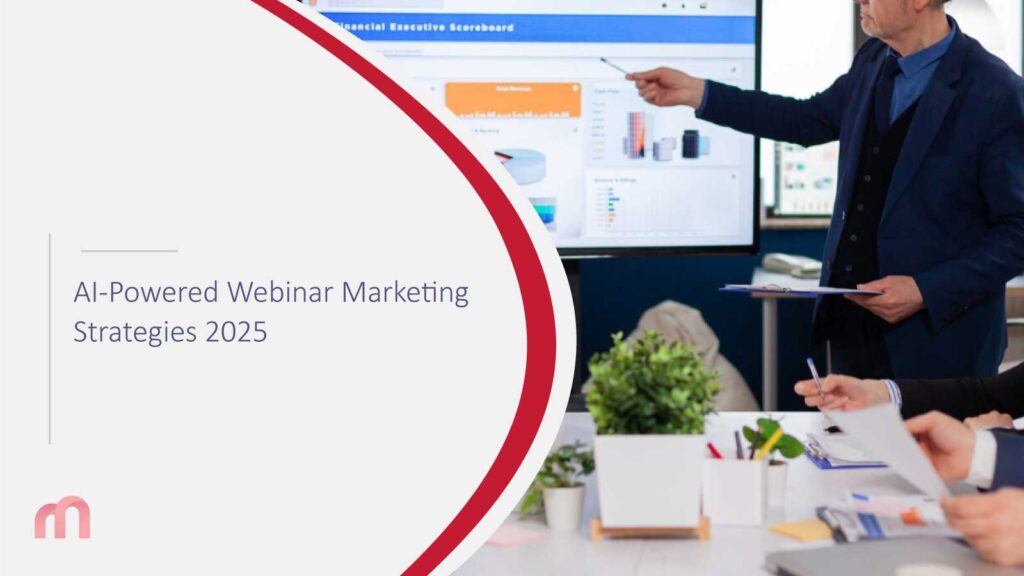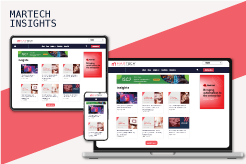You can have the most advanced AI in the world, one that predicts buying behavior, creates pitch-perfect messaging, and analyzes petabytes of data before your coffee even cools. But if your audience isn’t showing up or engaging, all that intelligence stays locked behind the screen. And that’s exactly where the webinar comes back into focus.
Not the flat, talk-at-you style of years past.
We’re talking smart, AI-powered experiences that convert curiosity into a real pipeline.
In 2025, webinars aren’t optional; they’re essential. And AI is the engine making them relevant again.
Webinar Has Quietly Evolved – Have You?
Let’s rewind a bit.
A few years ago, webinars were mostly digital monologues. A speaker. A deck. Maybe a chat box. Half your audience muted themselves mentally within 10 minutes.
Now? Webinars are dynamic. Personalized. Data-driven. They adapt to the viewer in real time, thanks to AI. Whether it’s the topic being surfaced, the follow-up message being sent, or the moment someone drops off, the system learns and adjusts.
Today’s leading platforms like ON24, BrightTALK, and Adobe Experience Cloud are using AI not just to run webinars, but to build complete, intelligent experiences around them.
And here’s what makes it even more powerful: this technology is no longer limited to large enterprise budgets. It’s accessible, scalable, and built for marketers with real revenue targets.
How Live Sessions Keep People Engaged in an Age of Constant Distractions
Think about how busy your calendar is. Between Slack pings, dashboards, and back-to-back calls, attention is harder to earn than ever.
So why are webinars still working?
Because when done right, they cut through the noise.
They’re permission-based. They’re live. And they’re increasingly personalized.
Webinars give your brand a human voice. They let your audience ask questions, challenge your thinking, and see the people behind the product. AI lets you extend that personal touch, reaching countless people, professions, and verticals at once.
Before, During, After: Where AI Fits In
Here’s a clearer look at how AI is upgrading each stage of the webinar process.
Before the Webinar
AI helps with precision.
- It tells you which audience segment is most likely to engage based on your CRM and past behavior.
- It picks the right time to schedule the session.
- It writes subject lines, landing page copy, and social media blurbs fast and in your brand voice.
You’re no longer guessing what works. AI models learn from each campaign and improve as they go.
You’re no longer guessing what works. AI models like those used in Drift and ZoomInfo learn from each campaign and improve as they go.
During the Webinar
AI becomes your co-pilot.
- It identifies which attendees are leaning in or checking out, based on click behavior, chat activity, and watch time.
- It dynamically adjusts the experience. A highly technical audience? The AI suggests deeper content. New prospects? It offers simple explainer videos.
- Live translation and real-time captioning are powered by tools like Microsoft Azure AI Speech and Google Cloud Speech-to-Text, making your content instantly accessible.
After the Webinar
AI picks up where most marketers usually stop.
- It summarizes key takeaways for follow-up emails with tools like Otter.ai or Descript.
- It scores leads not just by attendance but by intent, who asked pricing questions, who downloaded resources, and who stayed till the end.
- It repurposes the session into short clips, SEO-ready blogs, and LinkedIn posts, saving hours of manual work.
Real Example: Salesforce’s Webinar Playbook
At Salesforce Connections 2025, the marketing team revealed how they used Einstein GPT to reshape their webinar strategy.
Rather than sending the same registration emails to thousands, they customized messaging by role and industry. The content during the webinar was adjusted based on audience interaction. Post-event, AI wrote personalized follow-ups with links to relevant case studies.
The result? A 34% increase in qualified pipeline, and faster movement from MQL to SQL.
It wasn’t more content. It was smarter content, driven by AI.
Let’s Talk About the Awkward Parts – And How AI Fixes Them
You’ve probably attended a webinar where the speaker couldn’t unmute themselves, shared the wrong screen, or asked, “Can you all hear me?”
Each overlooked detail quietly weakens your credibility.
AI tools now quietly check your tech setup before you go live. They ensure that lighting, audio, and screen sharing are all functioning. Some even use facial tracking to make sure presenters stay engaged with the camera.
This isn’t about flashy upgrades. It’s about removing friction, so your content can shine.
The Big Win: Personalization at Scale
Here’s a scenario. You host a webinar with 2,000 attendees across five industries. Previously, follow-up emails were one-size-fits-all, sent to every prospect without variation.
Now, AI segments the audience by job function, engagement level, and interests. One person gets a detailed whitepaper. Another receives a short demo video. A third sees a blog post summarizing the key points.
All are generated and sent within an hour of the event.
This kind of responsiveness builds trust. It shows your brand is listening, not just broadcasting.
Five Things to Prioritize in 2025
If you want your webinars to stand out, not just exist, focus on this:
- Use AI to do the prep work: From targeting to creative to scheduling.
- Let data guide your delivery: AI will show you where your audience leans in or pulls back.
- Follow up fast, and personally: Don’t wait days. Let AI help you respond while the interest is hot.
- Build once, use often: Repurpose the webinar across channels using AI-powered summarization.
- Treat webinars as part of your ecosystem – not isolated events.
Final Thought: AI Isn’t Replacing Marketers – It’s Refocusing Them
The smartest teams aren’t using AI to do their job.
They’re using it to clear the noise and focus on what matters – building trust, adding value, and moving conversations forward.
In 2025, the best webinars don’t feel like webinars at all. They feel like a conversation you want to be a part of. And AI is what makes that possible.
Frequently Asked Questions
1. How does AI personalize webinars in real time?
AI tools track behavior like click patterns, poll responses, and watch time to tailor content on the fly. That might mean showing different resources, adjusting the Q&A, or surfacing relevant calls to action.
2. What are some good AI-powered webinar platforms?
Leading options include ON24, BrightTALK, Hubilo, ZoomIQ, Livestorm, and BigMarker.
3. Can small teams use AI for webinars?
Yes. Tools like Livestorm and Demio now offer AI-powered capabilities that are affordable and easy to use, even for small marketing teams.
4. How does AI help after the webinar ends?
It automatically transcribes the session, generates summaries, scores leads based on behavior, and suggests personalized follow-up content.
5. Is webinar ROI really improving with AI?
Yes. According to HubSpot’s 2025 marketing survey, AI-powered webinars saw 2.6x higher engagement and faster lead-to-opportunity conversion than non-AI sessions.
Discover the trends shaping tomorrow’s marketing – join the leaders at MarTech Insights today.
For media inquiries, you can write to our MarTech Newsroom at news@intentamplify.com



